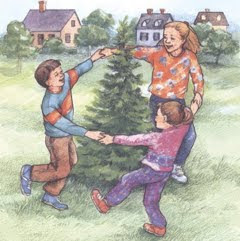The main three Christmas days are
a) 24th December called in Czech called Štědrý Den which could be translated as „Generous Day“
b) 25th December in Czech called „Boží Hod“ which could be translated as „God's Feast“
c) 26th December in Czech called „Na Štěpána“ which could be translated as „On St Stephen's Day“.
24th December - "Generous Day„ - has probably its name bacause of the wealth of food that has traditionally been served for Christmas dinner. In the morning the Christmas tree is decorated with traditional Czech Christmas ornaments and preparations are made for the most festive evening meal of the year (fried carp and potato salad).
According to one Czech Christmas custom, one is supposed to fast all day to see the "golden piglet".
After dinner, everyone around the table may sing Christmas carols before moving to the Christmas tree, which is all lit up and beautiful. By then, presents have been placed under the tree. Czech children believe that Christmas gifts are brought by Baby Jesus. Of course, it's the parents who manage to put the presents under the tree without being seen by the kids. Sometimes it is an achievement!
Some people end „Štědrý Den“ (24th December) by attending the midnight mass (půlnoční mše) at a local church. The celebration and feasting continue on both 25th and 26th December – people give festive lunches and often invite their relatives or friends for the meal or pay each other visits in the afternoon.







